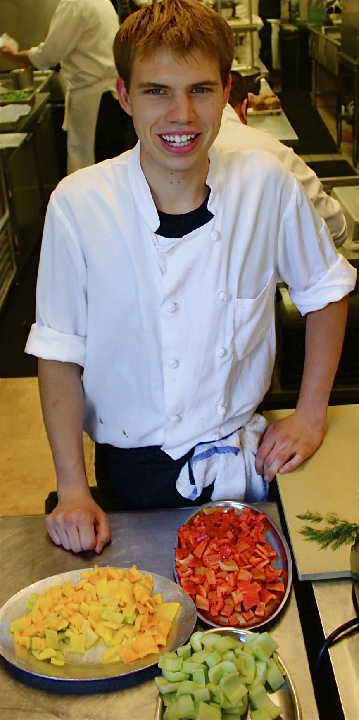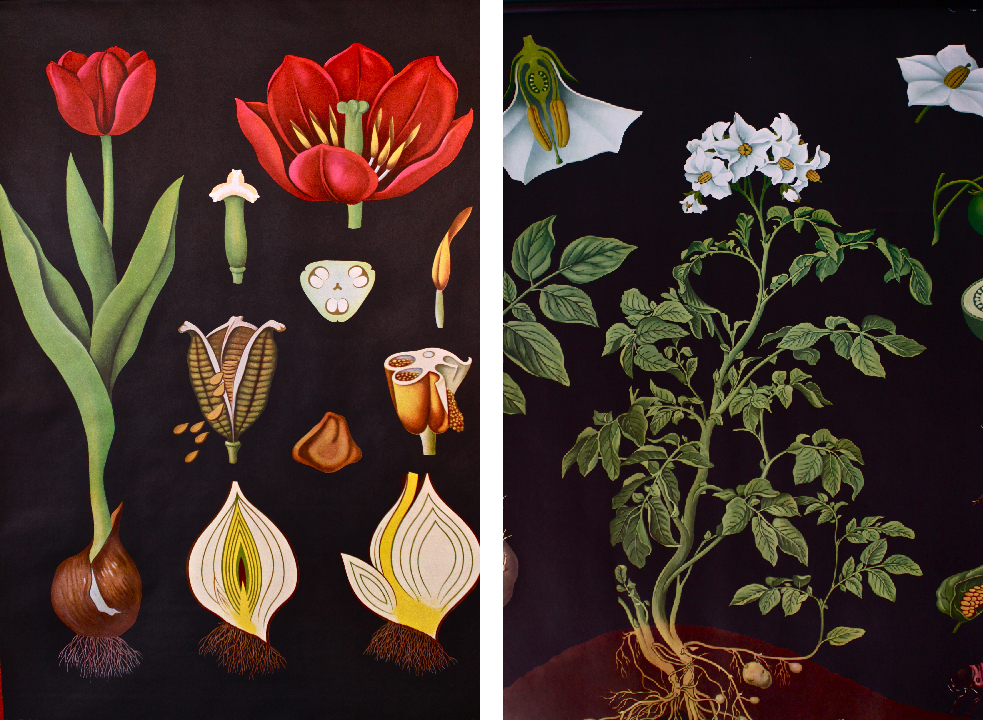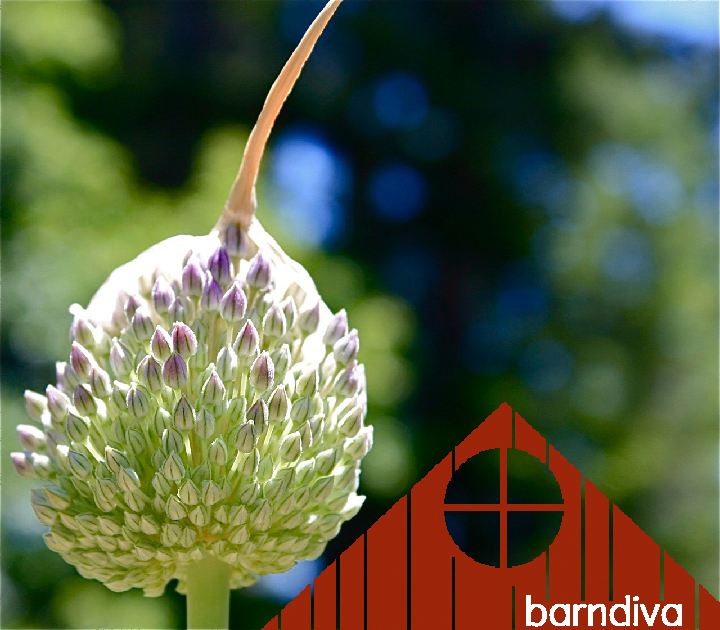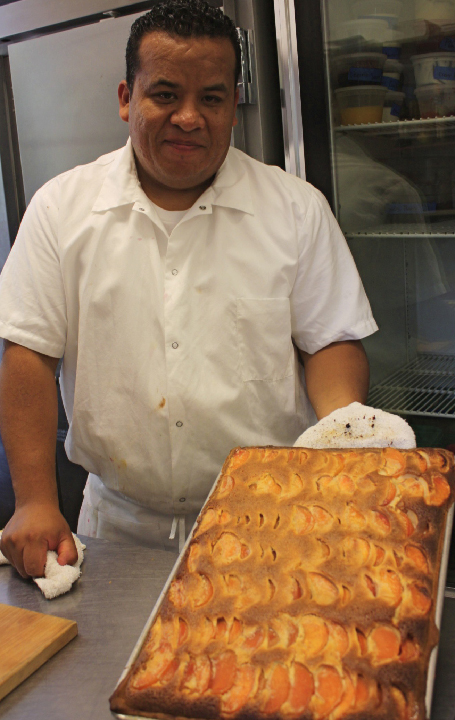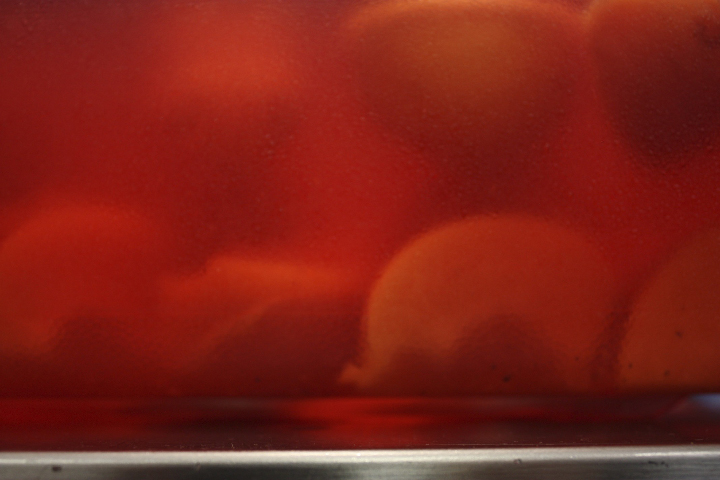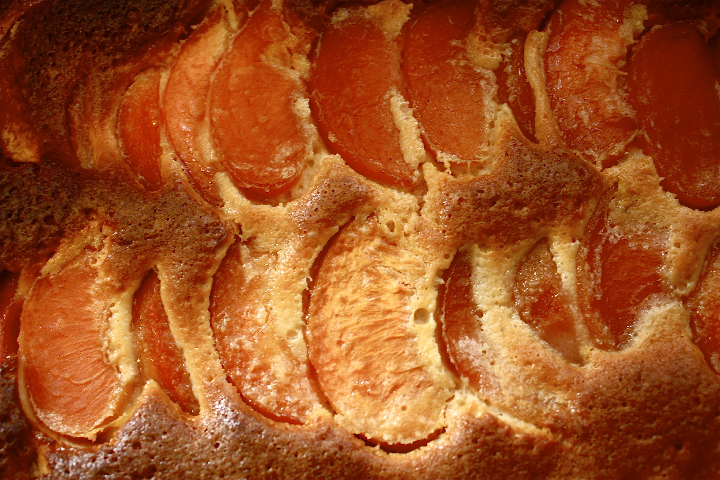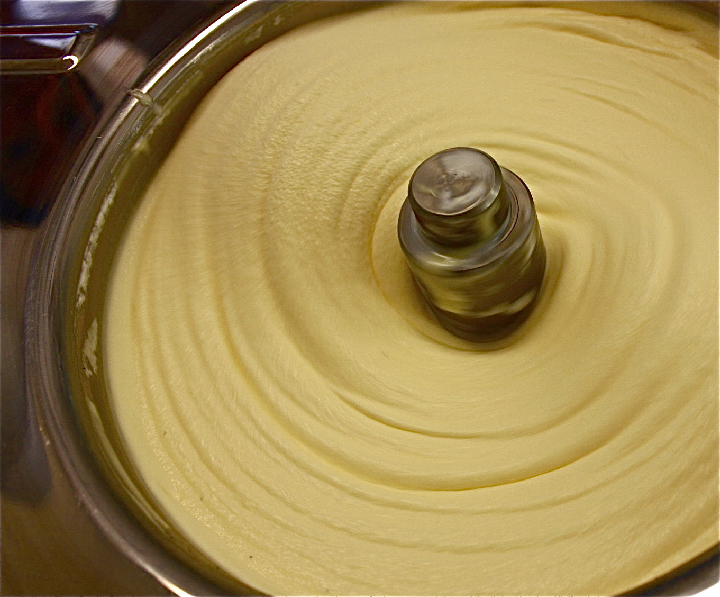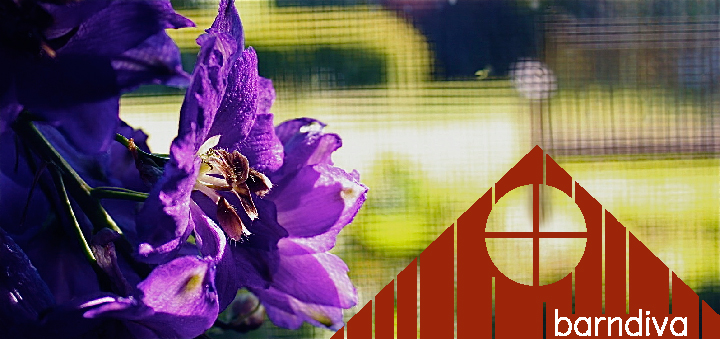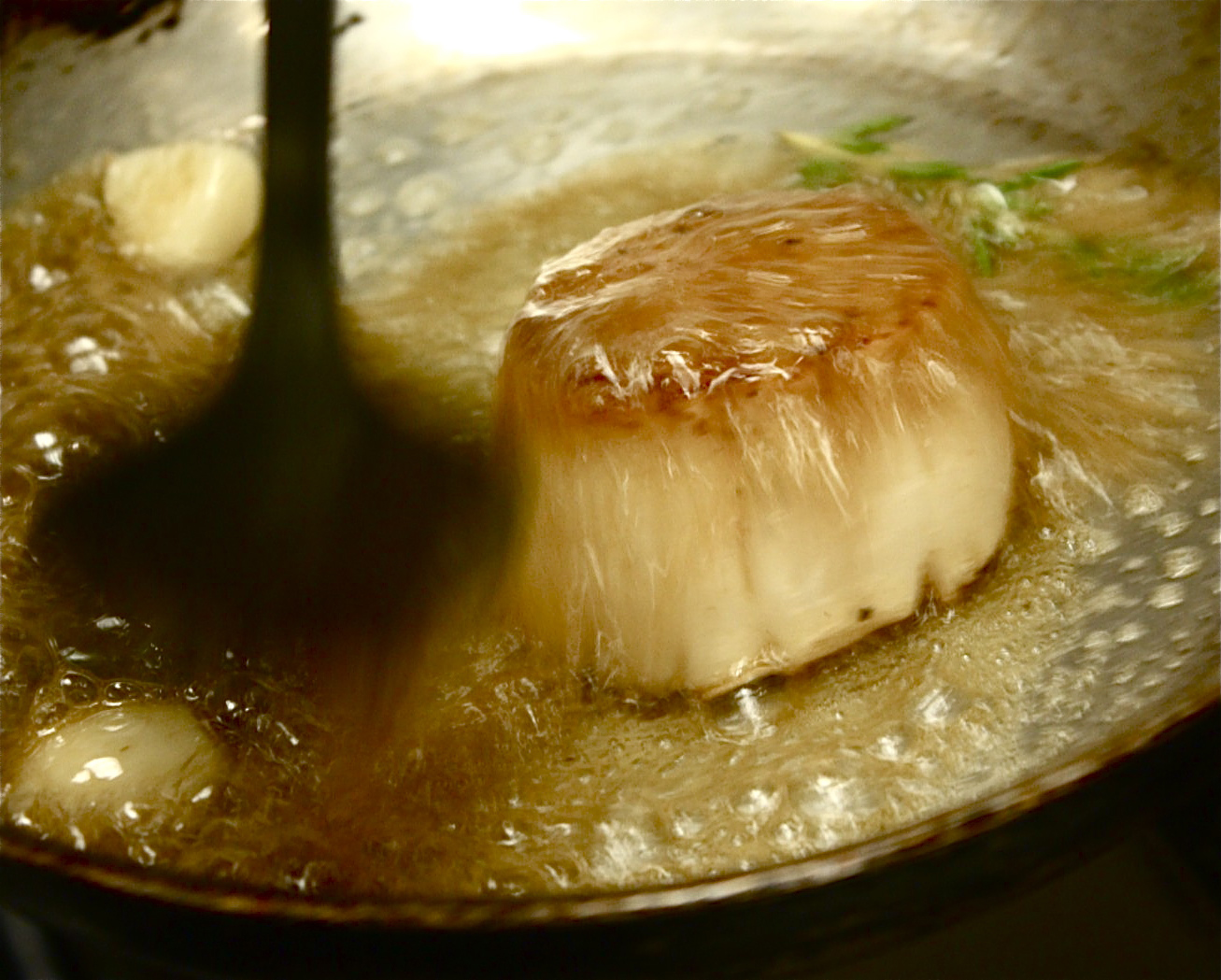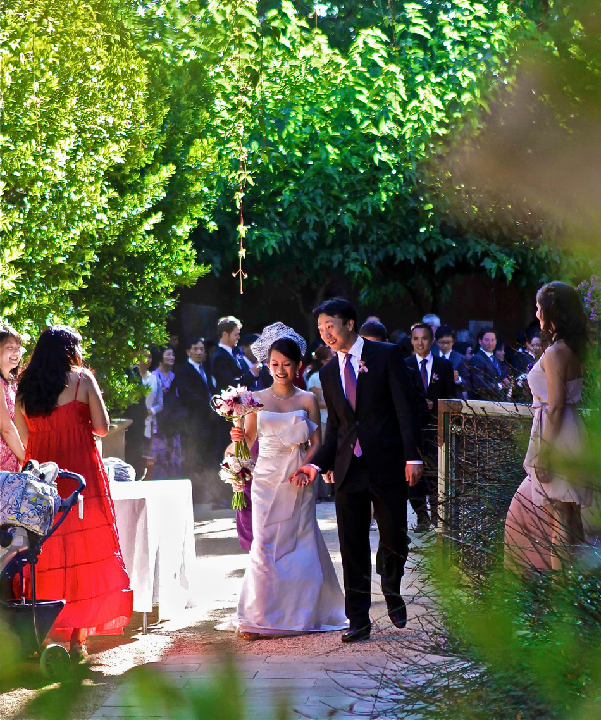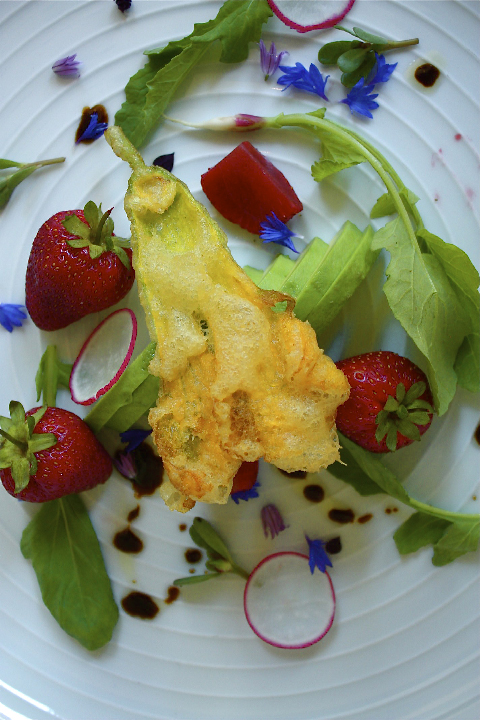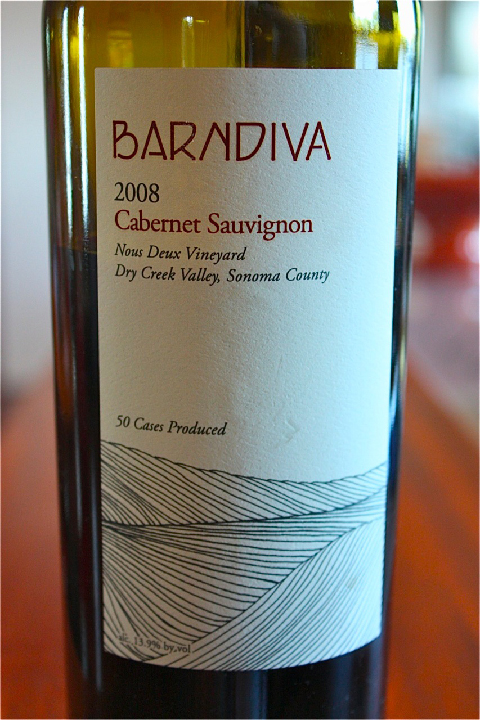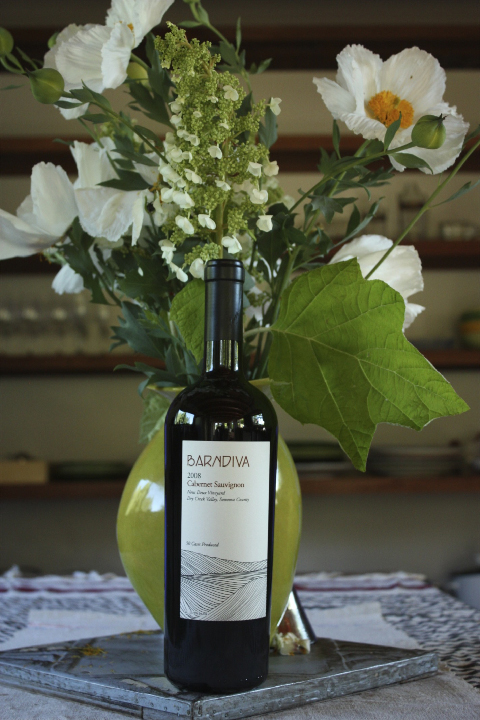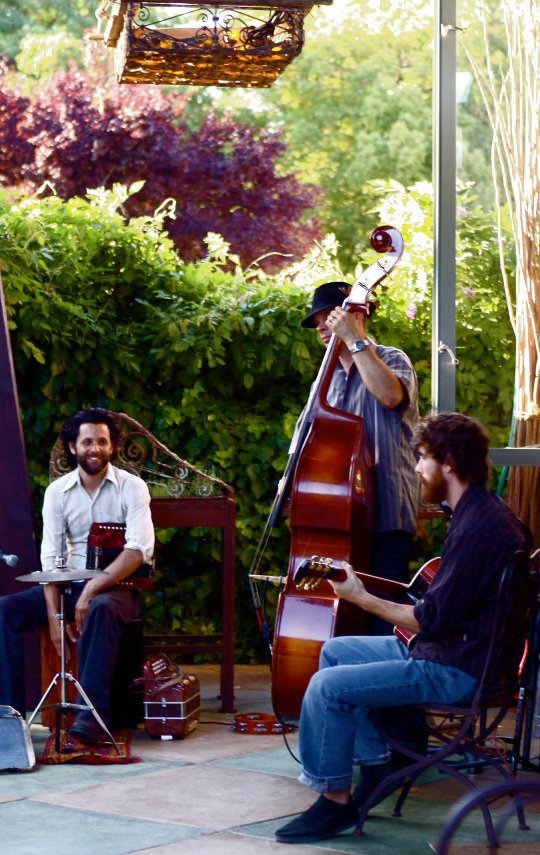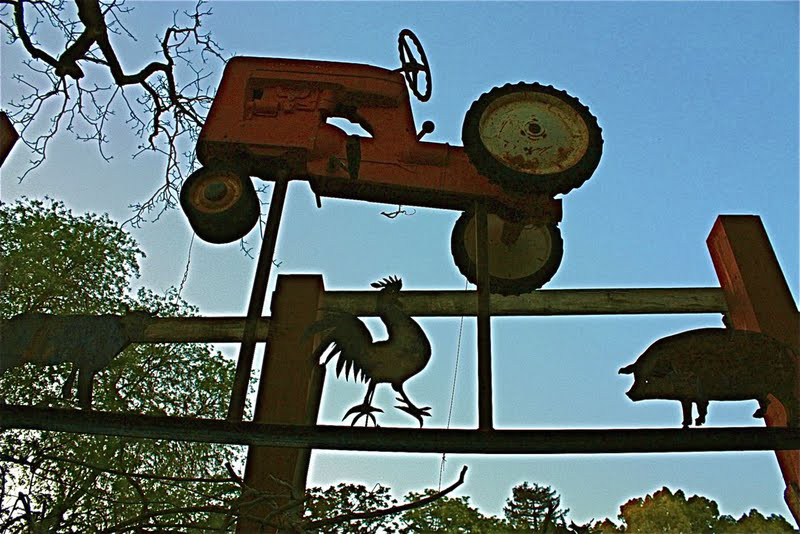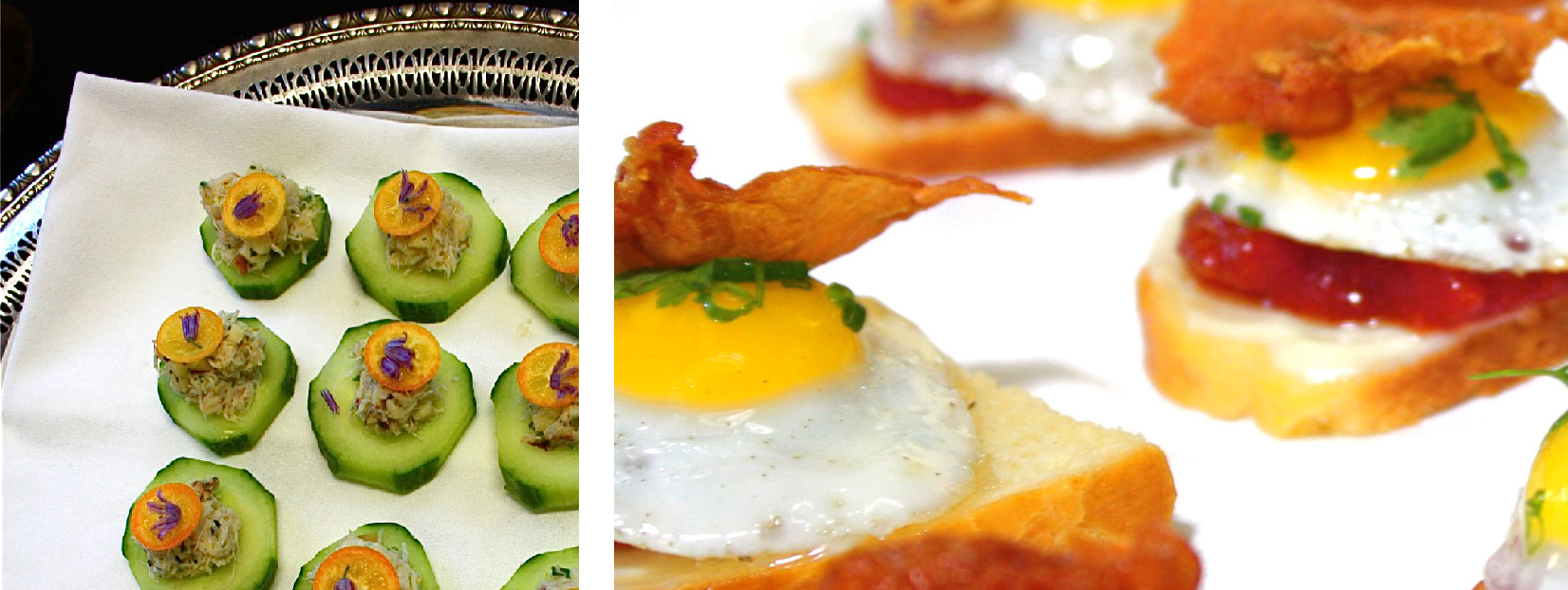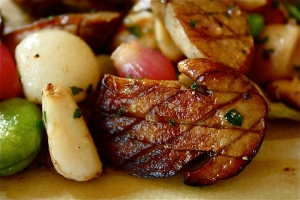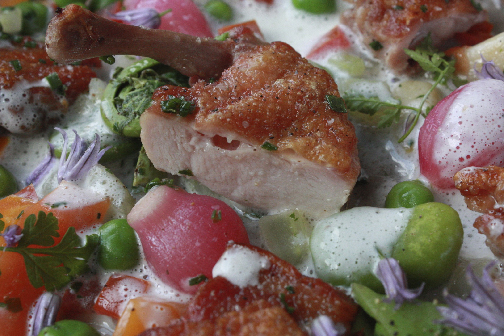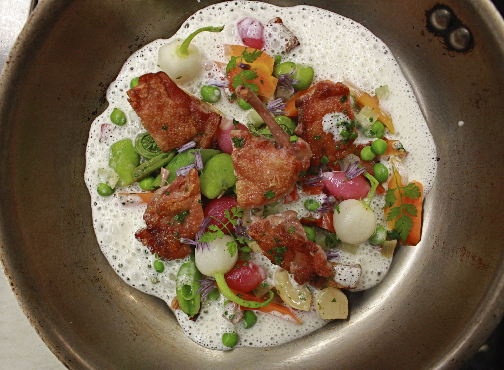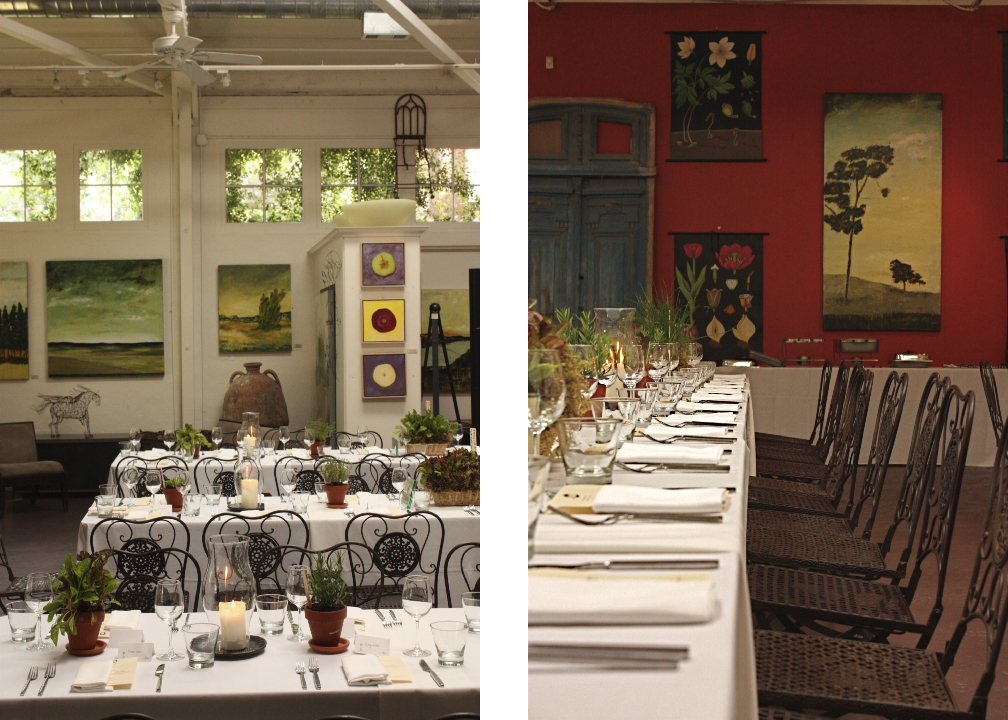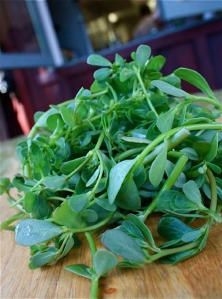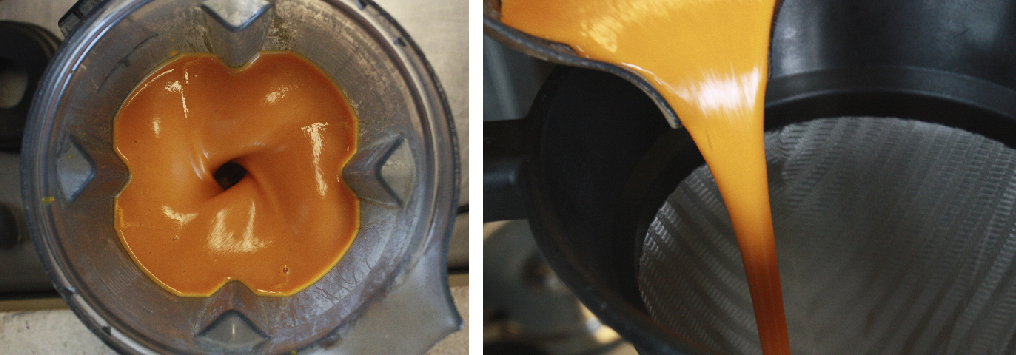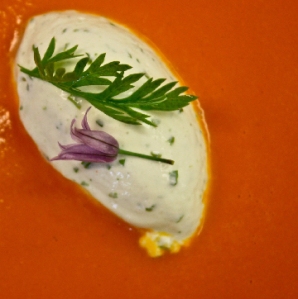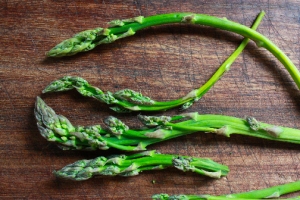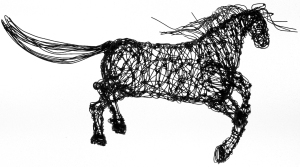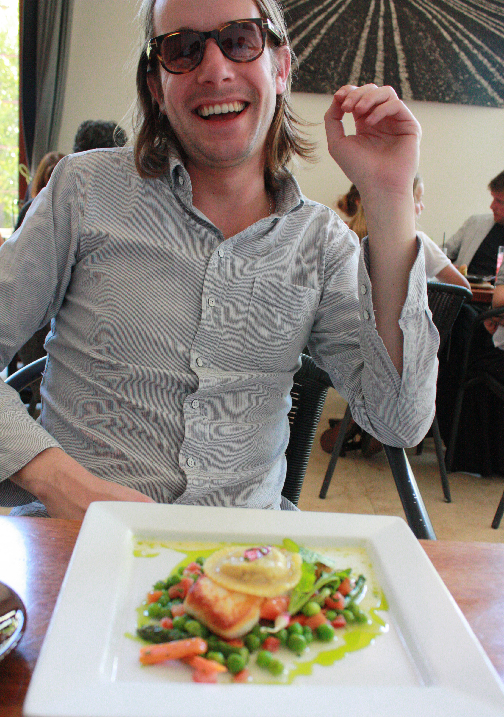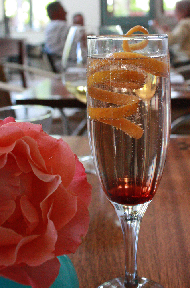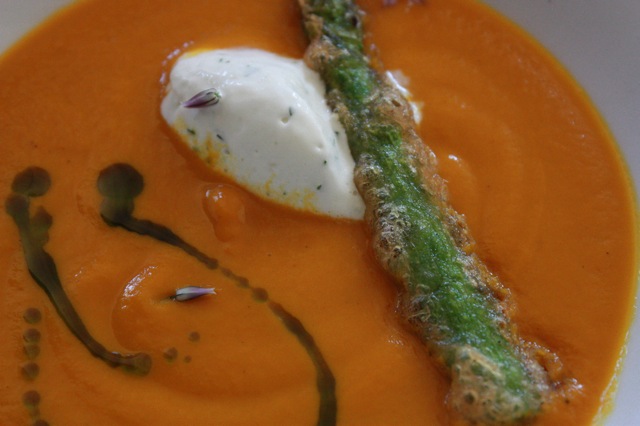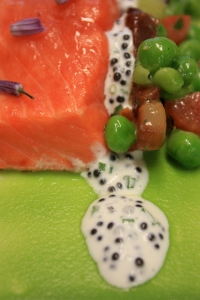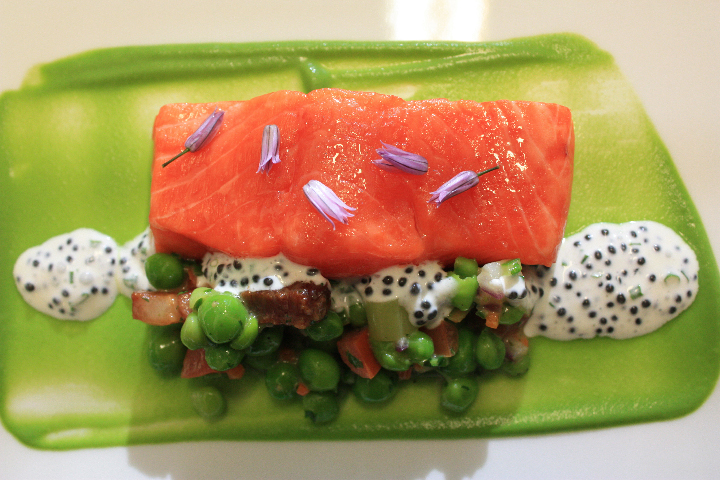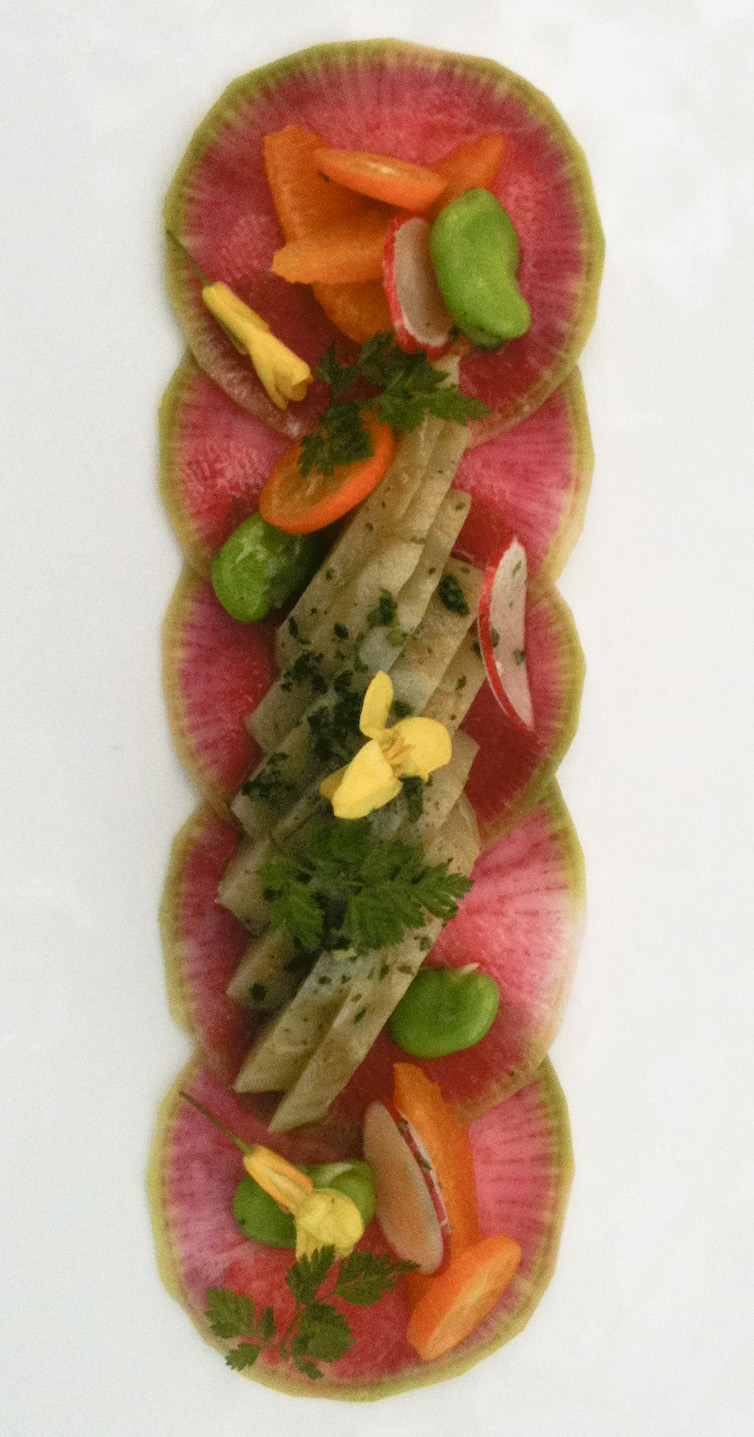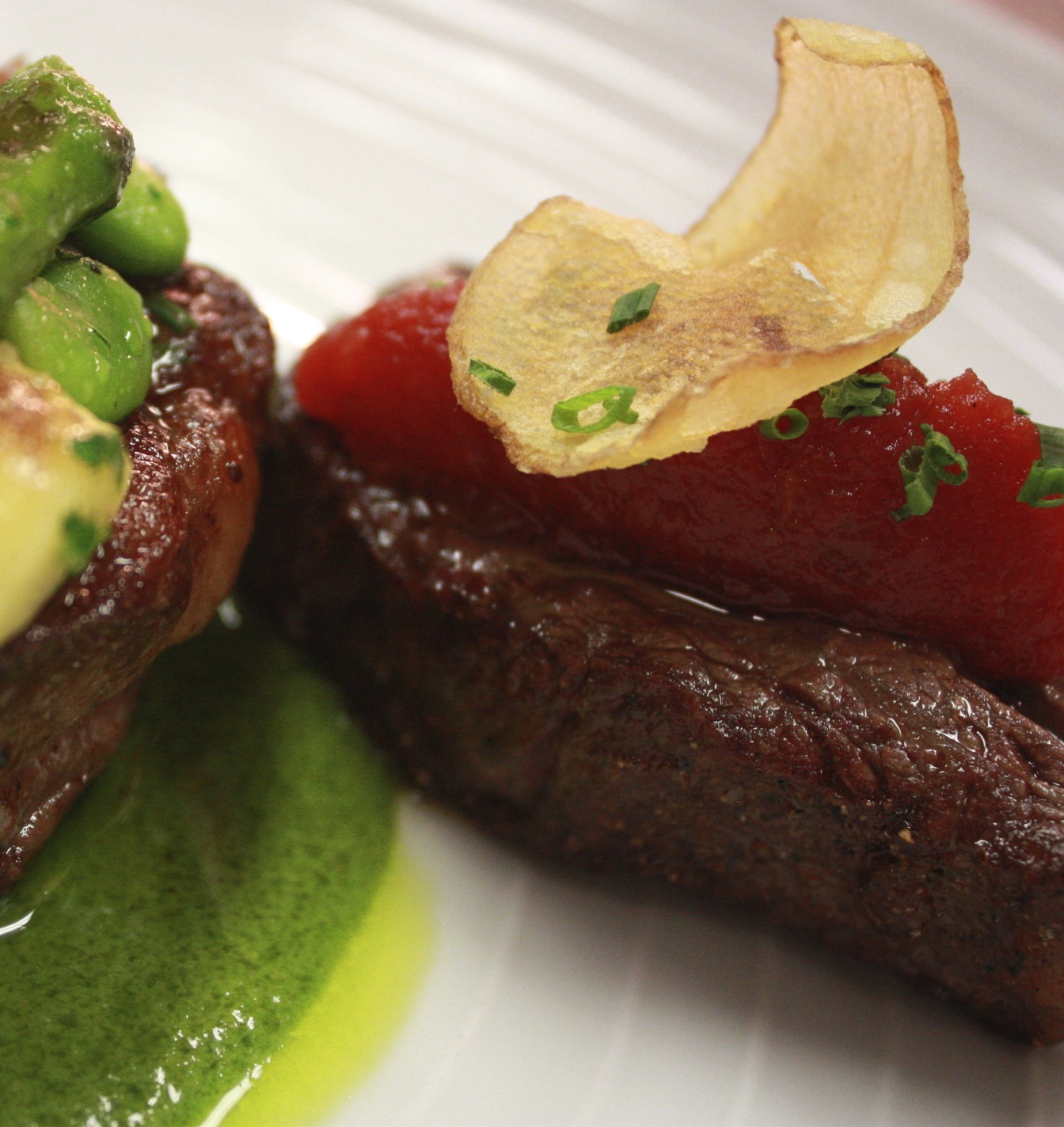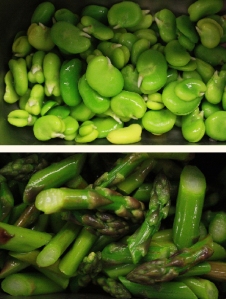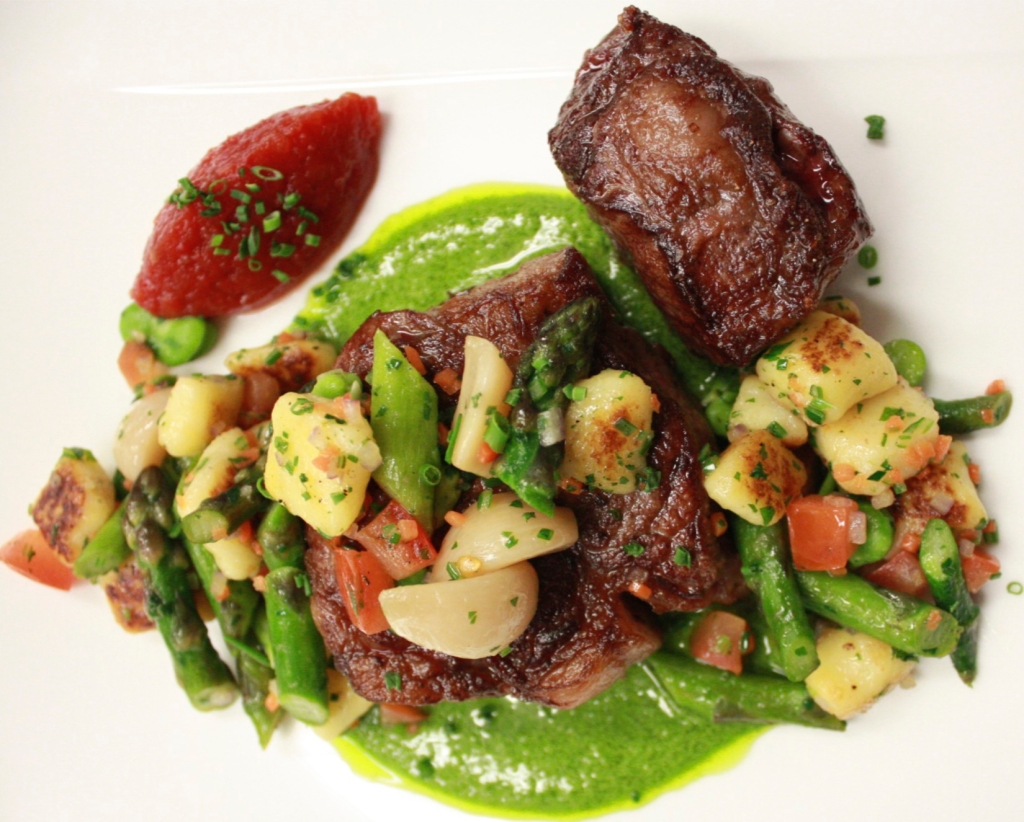Dish of the Week:
Chesapeake Bay Soft Shell Blue Crab BLT
Summer is Blue Crab season all along the Eastern Seaboard, especially in the fishing villages off the coast of Maryland where the fresh waters of the Chesapeake Bay empty into the Atlantic. These soft-shelled delicacies ~ still listed as a “good alternative” on Seafood Watch ~ are a decided luxury for those of us living on the West Coast where they usually arrive frozen, if at all. Happily, ours arrived alive, freshly (and properly) packed in straw. Following a recipe that was as traditional in its judicious use of Yankee spices as it was Fancheresque in style (California Modern Country from first bite to last) our blue crabs reached the plate by dinnertime.
 A "soft" shell crab may sound like a crustacean oxymoron until you consider that technically they are without any shell when they are harvested, just after molting, only a few hours before their new shell begins to harden. Blue crabs shed their hard carapace in order to grow, burrowing deep in the muck to protect themselves from predators ~ but while an experienced fisherman (and most along the Atlantic are third generation or more) are canny at finding them, and can tell with a glance when to harvest, nowadays it is considered less harmful to the seabed for migrating crabs to be trapped and held in large shedding tanks until the witching hour. Males have blue claws and a narrow abdominal apron, referred to in local parlance as the 'Washington Monument', while females have red tipped "painted fingernails," and a broader apron ~ ergo 'the Capitol Dome'. (There's a joke in here somewhere, but I'm not finding anything to do with Washington particularly funny at the moment)
A "soft" shell crab may sound like a crustacean oxymoron until you consider that technically they are without any shell when they are harvested, just after molting, only a few hours before their new shell begins to harden. Blue crabs shed their hard carapace in order to grow, burrowing deep in the muck to protect themselves from predators ~ but while an experienced fisherman (and most along the Atlantic are third generation or more) are canny at finding them, and can tell with a glance when to harvest, nowadays it is considered less harmful to the seabed for migrating crabs to be trapped and held in large shedding tanks until the witching hour. Males have blue claws and a narrow abdominal apron, referred to in local parlance as the 'Washington Monument', while females have red tipped "painted fingernails," and a broader apron ~ ergo 'the Capitol Dome'. (There's a joke in here somewhere, but I'm not finding anything to do with Washington particularly funny at the moment)
 Ryan prefers not to deep fry them, believing a lighter batter stands less chance of interfering with the blue crab's fragrantly delicate meat, which tastes more of the estuary than the sea. The crabs were broken down, cleaned, and lightly tossed in seasoned flour and Old Bay (Celery Seed, Salt, Paprika and goodness knows what else), his play on a Southern Fricassée sauté.
Ryan prefers not to deep fry them, believing a lighter batter stands less chance of interfering with the blue crab's fragrantly delicate meat, which tastes more of the estuary than the sea. The crabs were broken down, cleaned, and lightly tossed in seasoned flour and Old Bay (Celery Seed, Salt, Paprika and goodness knows what else), his play on a Southern Fricassée sauté.
To cook he placed them directly into an extremely hot pan, shook it a few times, then added a generous knob of butter and a few cloves of garlic. This instantly turned the pan into a furiously bubbling, fragrant morass. All very dramatic, and over in a few minutes, precisely the time it took for their cool blue to turn a gorgeous russet around the edges.
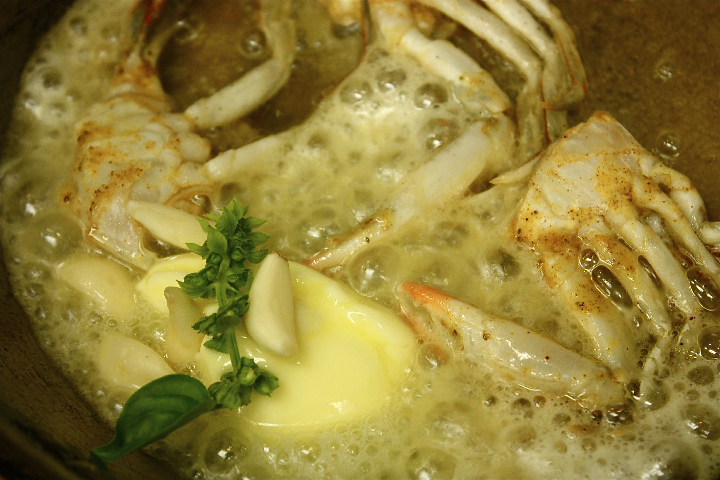 The finished dish was the perfect cross between the best parts of a BLT ~ think heirloom tomatoes and crunchy prosciutto ~ and the briny mayo you find in a lobster roll, though Chef upped the ante by dropping the roll and substituting the mayo with a rich housemade aioli that took its color from letting the saffron 'bloom' in white wine.
The finished dish was the perfect cross between the best parts of a BLT ~ think heirloom tomatoes and crunchy prosciutto ~ and the briny mayo you find in a lobster roll, though Chef upped the ante by dropping the roll and substituting the mayo with a rich housemade aioli that took its color from letting the saffron 'bloom' in white wine.
 As dramatic as the cooking process was, at this point the slices of heirlooms stole the show visually, bringing, along with brilliant color, a subtle taste comparison. While the red tom's were sweet, the green, with less residual sugar in the flesh, tasted tart on the tongue with a more pronounced, firmer texture. (full disclosure: I never get much from yellow tomatoes.)
As dramatic as the cooking process was, at this point the slices of heirlooms stole the show visually, bringing, along with brilliant color, a subtle taste comparison. While the red tom's were sweet, the green, with less residual sugar in the flesh, tasted tart on the tongue with a more pronounced, firmer texture. (full disclosure: I never get much from yellow tomatoes.)
My God, this was a good dish, with mouthfuls of soft crunchy crab giving way to the vinegar from the tomatoes and an ethereal, buttery sweet seawater juice flooding the palate as it mingled with aioli. Eating it brought me back to a night I spent on a beach somewhere on the Eastern Chesapeake years ago when, after an epic meal, one of locals stood drunkenly to his feet and began to recite the names of tidal creeks and small harbors surrounding us in the dark. They rolled off his tongue like poetry ~ Pocomoke Sound, Ape's Hold Creek, South Marsh, Devil's Island to the Head of Tangier Sound. It all came back to me in a rush ~ stomach full to aching, the heat of the bonfire, the smell of the sea. Then again, food this good makes it easy to speak in tongues.
If you'd like to read more about what threatens the Chesapeake Bay's historic Blue Crab population, click on the link below for an article that succinctly summarizes most of the data I read on the current health and methods of harvest for this remarkable crustacean, which once drove the local fishing economies of both Maryland and Virginia. We're so used to reading about overfishing, you may be surprised at the main culprit. Or not.
In the Field with Friends
Mix Garden Garlic
 So many reasons we feel blessed to have Mick Kopetsky and Alex Lapham in our lives, not least the joy of having access to this lovely collection of garlic they grew which recently showed up on the Mix wholesale list. I baked and tasted through them all and the descriptors below, from Mix, were right on the money. What was most surprising beyond the different levels of heat and bite each brought to the mouth was how much their texture varied, from the Chesnok Red, which held its shape (one reason we use it for confit) to the Northern Italian Red, which went a bit too mushy for me. My favorite: Rose of Lautrec, which Drewski uses for our garlic chips (though to be fair, it had me at hello with the name).
So many reasons we feel blessed to have Mick Kopetsky and Alex Lapham in our lives, not least the joy of having access to this lovely collection of garlic they grew which recently showed up on the Mix wholesale list. I baked and tasted through them all and the descriptors below, from Mix, were right on the money. What was most surprising beyond the different levels of heat and bite each brought to the mouth was how much their texture varied, from the Chesnok Red, which held its shape (one reason we use it for confit) to the Northern Italian Red, which went a bit too mushy for me. My favorite: Rose of Lautrec, which Drewski uses for our garlic chips (though to be fair, it had me at hello with the name).
Chesnok Red: One of the best cooking garlics with large easy to peel cloves
Late Italian: This softneck variety is very pungent
Silver Rose: Rose-colored cloves are ideal for storing Northern Italian Red: Large bulbs are sweet and spicy
 Rose de Lautrec: French variety that has a complex sweet flavor
Drew with fresh garlic chips
Rose de Lautrec: French variety that has a complex sweet flavor
Drew with fresh garlic chips
All text Jil Hales. All photos Jil Hales (unless otherwise noted)







